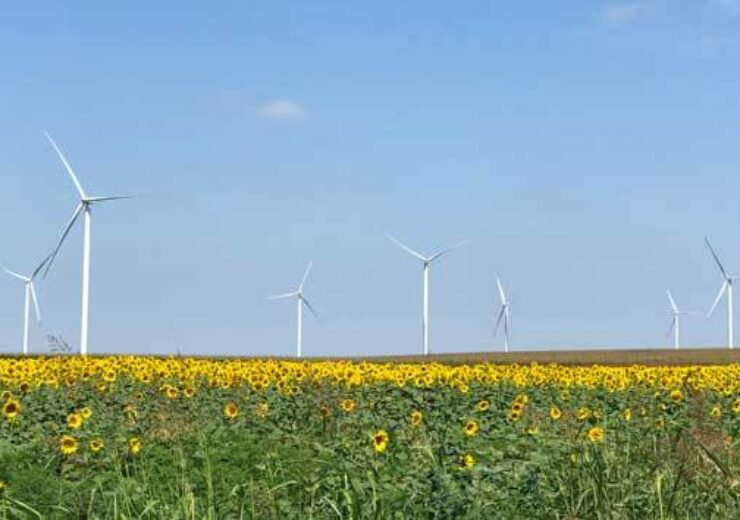GET 2021-25 will build on the success of an already ambitious GET approach for 2015-20

Čibuk1- the largest windfarm constructed in Serbia and the wider Western Balkans region. (Credit: European Bank for Reconstruction and Development)
The European Bank for Reconstruction and Development (EBRD) is poised to reinforce its position as a leader in green finance with an ambitious plan to broaden and deepen its climate activities and become a majority green bank by 2025.
The EBRD’s new Green Economy Transition (GET) approach for 2021-25 forms part of the Bank’s overall strategy for the next five years, going to the Board of Governors for approval at the EBRD Annual Meeting on 7-8 October. If approved, GET 2021-25 will be the EBRD’s new blueprint for supporting its countries of operation pursue a green, inclusive and resilient recover from the impact of the pandemic.
GET 2021-25 will build on the success of an already ambitious GET approach for 2015-20, which the EBRD launched in the run-up to the Paris climate conference, where countries agreed to take action to keep global warming below. The first GET approach has already taken EBRD green investments to 46 per cent of its total investment last year, from an average of 24 per cent in the decade to 2015.
The EBRD is pursuing its ever more ambitious green strategy while continuing to offer short-term support to its countries and clients to address the implications of Covid-19. All EBRD investments in 2020-21, worth €21 billion, are already committed to helping these countries counter the economic effects of the coronavirus pandemic. An emergency support programme for infrastructure providers is helping ensure the provision of vital services and the continuation of sustainable infrastructure projects despite acute pressure from the pandemic.
While in the short term the need for liquidity cuts across all other investment considerations, the EBRD’s new green approach looks further forward to provide planning tools that will also prepare the Bank to handle the post-crisis economic recovery phase.
Josué Tanaka, the EBRD’s Managing Director for Energy Efficiency and Climate Change, said: “Covid-19 is a sharp warning shot bringing an increasing realisation about the urgency of addressing the rising climate and environmental crisis. Accordingly, the new EBRD Green Economy Transition approach identifies specific policies and investments in the short term which will support a green, inclusive and resilient recovery. And it also defines a set of actions to support its countries of operations to progress towards a low-carbon and resilient future.”
Mattia Romani, Managing Director, Economics, Policy and Governance, said: “We have a once-in-a-lifetime opportunity to rebuild much of the global economy post-Covid-19. Why rebuild it on the same premise as before – with high emission intensity and environmental costs – when we know that this is the past, not the future? We must use this opportunity to rebuild economies greener, fully taking into account the risks of climate change.”
GET 2021-25 offers more than a higher target percentage of green investments.
It also commits the EBRD to focus on aligning with the Paris Agreement goals, with a decision on full alignment to be considered within the next two years.
Another focus is enhancing policy engagement to develop long-term decarbonisation and resilience pathways. As the world moves into a crucial period – the decade identified in the 2018 IPCC report as the time in which key changes must be made to allow global temperature rises to be kept below 2C – aligning different organisations’ approaches and metrics becomes ever more vital for success in moving towards a low-carbon future. Building closer partnerships at country and sector level as well as with MDBs and other institutional partners is at the core of the GET 2021-2025 approach. In implementing GET 2021-2025, the EBRD will also pay particular attention to the social implications of change. Gender considerations and the importance of a just transition, in which no one is left behind as carbon-intensive industries are reshaped, will be carefully examined, as will circular economy opportunities and green digital solutions.
The new GET 2021-25 approach will also broaden the range of the Bank’s green investments by innovating across a range of thematic action areas including energy efficiency, adaptation, green financial systems, industrial decarbonisation, sustainable food systems, energy systems integration, cities and environmental infrastructure, sustainable connectivity, green buildings and natural capital.
The combination of moving towards Paris alignment, expanding internally into new investment areas, expanding the scope of social inclusion work, and closer ties with the partners also working towards the goal of a low-carbon future keeps the EBRD at the forefront of the global move towards “joined-up” greening.
To counter the pandemic’s economic effects, large-scale stimulus packages will be needed to kickstart activity. Linking this economic stimulus with ever more effective climate action – and helping the world “tilt to green” in time to avoid catastrophic levels of global warming – will be critical in accelerating the transition to a low-carbon economy. GET 2021-25 offers a clear and structured roadmap towards a sustainable future.
Source: Company Press Release
